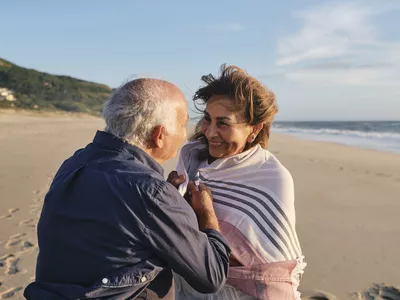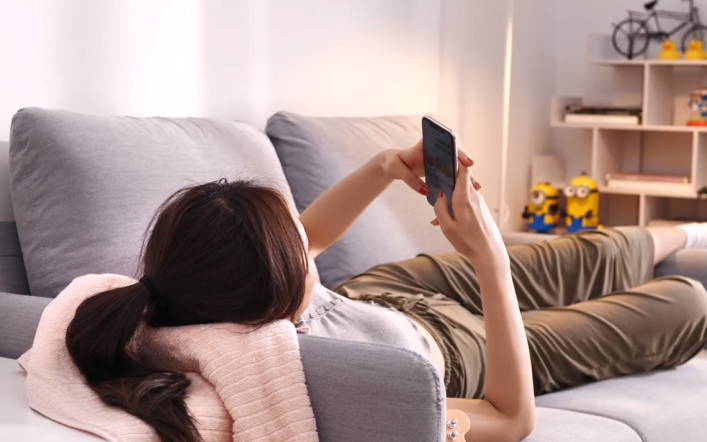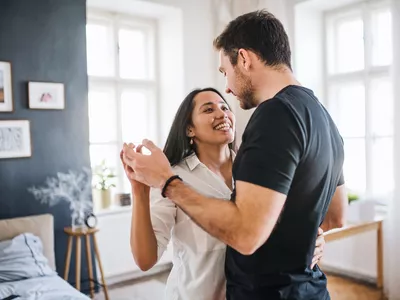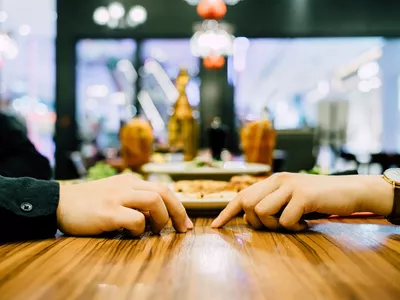Love isn’t just for the under-30 crowd. If the ‘Golden Bachelor’ and ‘Golden Bachelorette’ have taught us anything, it’s that there’s no age limit to finding love, including dating in your 50s and 60s.
“Dating during your 50s and 60s can look and feel differently compared to dating in earlier adulthood,” says Angela Nicole Holton, MSW, a dating and relationship coach. This can come with both pros and cons. On the plus side, it means greater wisdom and experience. On the downside, it can mean adapting to a changing dating culture.
If you are getting back into the dating game at this stage of your life, chances are you’ve survived the ups and downs that come with long-term relationships. Kids, marriage, and changing life circumstances—you’ve dealt with it all. You’re at a different point in your life, so the stakes have changed. You’ve got an established career, family, friends, and interests. You don’t want to start over. What you really want is someone who complements your life.
The basics of dating over 50 aren’t really all that different from when you’re younger. Still, the experiences that each person brings to the table–past relationships, emotional baggage, etc–can make things more complex. Plus, the dating pool has shifted, which may lead to varied experiences for men and women. Many people, particularly women, have plenty of personal experience with the not-so-great aspects of online dating (like unwanted contact, sexism, threats, and harassment).
If you’re ready to get back into dating but feel nervous about what it looks like after 50, these tips will help you make the most of your love life in middle age and beyond.
At a Glance
The plus side of dating in your 50s and 60s is that you know what you want. The downside is that age-related insecurities can make it harder to connect with someone who really *gets* you. Evaluating your goals, boosting your confidence, and getting familiar with the ins and outs of online dating can help ensure you get the most out of your dating experience—and have a better chance of finding love in your golden years.
Step 1: Understand Yourself
Life experience is one of the big advantages of dating in your 50s and 60s. “You have a better idea of who you are, what you want out of a relationship, and the type of partner you desire. These are all benefits to making dating a little less frustrating and finding more enjoyment in it,” Holton says.
Even though you have a good handle on who you are and what you want, it’s a good idea to step back and do some self-reflection before diving into the dating pool. Dating over 50 comes with it’s own unique challenges, but it’s also a chance to clearly establish what you’re looking for in a relationship.
You’re not just dating for the sake of it—you want to find someone who can complement and support your life and who you are in the here and now as well as the years to come.
The first step is to ask yourself what you’re looking for in a partner at this point in your life.
- Are you looking for a long-term partner?
- Are you looking for something more casual?
- Do you see yourself getting into another long-term, committed relationship?
It can help to look back on your past relationships for clues about what you should look for going forward. What worked well and what didn’t?
Ask yourself, what would a relationship have to look like for it to work with who you are today?
The reality is that your goals and priorities have changed from what they were when you were in your 20s, 30s, and 40s. Instead of looking for a partner to settle down and have a family with, you might be more interested in someone who is emotionally compatible and shares your values and interests. Knowing what matters most to you now at this stage of your life makes it clearer who will fit in your life, rather than you trying to change yourself in order to fit into theirs.
“Many couples who raised a family together realize too late that their dreams for retirement are not the same, so it’s nice to look at this as an opportunity to find someone who wants what you want for your golden years,” explains Caroline Millet, a Seattle-based matchmaker and life coach.
Step 2: Boost Your Confidence and Self-Esteem
Greater self-awareness is another big advantage of dating in your 50s and 60s. This self-assurance is important because you may find the thought of dipping your toes back into the dating pool a bit daunting. It can be really easy to get caught up in your fears about dating at your age, particularly when it comes to figuring out the ins and outs of the dating scene that looks a lot different than it did 10 to 20 years ago.
Instead of focusing on any insecurities you have about your aging body, try to concentrate on the things you bring to the table. Your strengths are worth feeling confident about.
There are also steps you can take to boost your self-image. It doesn’t mean giving yourself a complete makeover (unless you want to!), but it’s always a good idea to do some simple things that help you feel good about yourself, whether that means trying out a new style, getting more active, or finding ways to pamper yourself.
It’s also important to avoid comparing yourself to others on the dating scene, including younger folks. Unfortunately, research has shown that many dating sites promote a youthful ideal–even those geared toward older daters.1
“The narrow representation of older adults and the anti-aging messages portrayed in the pictures convey that love, intimacy, and sexual activity are for older adults who are “forever young,” explain authors Ateret Gewirtz-Meydan and Liat Ayalon in the study published in the Journal of Women and Aging.1
Rather than getting hung up on trying to appear younger, shift your mindset to think about the things that make you stand out. When you let those qualities shine, you’re more likely to meet potential partners who appreciate what you have to offer.
Step 3: Explore Your Options
Getting the hang of a remarkably different dating scene isn’t always easy. Not only is the dating pool often smaller, but it might feel like all the rules have changed. The need to adapt to a forever-evolving dating culture is one of the biggest challenges, according to Holton.
Swipe culture, love bombing, breadcrumbing, and cuffing season are just a few examples.
Holton suggests staying open to love, being approachable, and reflecting the kind of person you want to match with are key. “Become the person within yourself that you desire in a partner. Become the match you’re seeking,” she says.
When I host my single events, some guests have mentioned that they’re concerned about being the eldest in the room. It’s natural to feel this way, as we all want to feel included and accepted.
KSENIA DROBEN, DATING EXPERT AND MATCHMAKER
Of course, online dating is also a great option (we’ll talk more about that in-depth a little later!). While websites and apps are great tools, don’t discount the appeal of in-person connections.
There’s been a lot of talk about the decline of ‘third spaces,’ those places that aren’t home or work but serve as important social settings ripe for meeting new people. However, there are still ways to form organic connections—you just need to seek out the experiences, events, and activities that offer those opportunities.
Step 4: Dip Your Toes Into Online Dating
If you’ve been away from the singles scene for a while, online dating can seem strange–even a little uncomfortable. Research suggests that around 40% of single adults use online dating sites to look for a new partner, and around 25% of new couples report meeting online.2
“It might be helpful to consider that there is always room to learn new flirting or communication techniques,” suggests Ksenia Droben, a matchmaker, dating coach, and CEO of Droben Matchmaking. That includes online apps, such as WhatsApp, Facebook Messenger, or video calls, she says.
While it takes some time to adjust, online dating can be a great way for single folks in their 50s and 60s to make new, meaningful connections with potential partners.
The trick is figuring out how to make these online platforms work for you, including picking the right dating site. Some options are geared toward daters of all ages, while others are aimed specifically at middle-aged or older singles.
Apps and Websites to Consider
Dating apps for older adults include:
- OurTime
- SilverSingles
- DateMyAge.
You might also consider more general-audience options such as:
- Bumble
- Harmony
- Hinge
- Match
- OKCupid
- Tinder
Such sites also allow you to filter potential partners by interests, relationship goals, and lifestyle preferences.
Once you’ve chosen a dating site, it’s time to create a dating profile that reflects the real, authentic you. You want to be loved for who you really are, so don’t try to pretend to be something you’re not! Focus on highlighting the qualities that make you unique, whether your love of travel or your passion for your hobbies. Choose a photo that accurately shows who you are today. Pick a well-lit, relaxed image where you are smiling in a natural setting.
“It is important to remember that every visitor to your online profile could be a special one, so it is advisable to pay attention to all aspects of your profile, including the photos, text, and attitude,” Droben explains.
As you start interacting with potential matches, remember it can take time! You may not click with the first (or second, or third) person you interact with. Spend time reading profiles, and don’t be afraid to chat online for a while before you decide to meet up in person.
Remember, always use caution when meeting people you’ve met online. Watch for red flags, including people who push for too much personal information and details right off the bat. It’s always a good idea to meet in a public place and make sure that a friend or loved one knows where you will be and when you’ll be home.
“If it doesn’t feel right, it probably isn’t. Trust your instincts and pay attention to red flags. You have the right to maintain your boundaries,” Holton says.
Safety Tip
Orna and Matthew Walters, founders of Creating Love on Purpose, have some great tips for staying safe (and avoiding scams) when you are dating online.
They suggest that, when it comes to online dating, it isn’t ‘real’ until you meet in person. “Don’t invest your heart, make a commitment, or lend money to anyone who you haven’t spent quality time with in the same physical space,” they explain. “Video chats don’t count, nor do long telephone conversations. Following this one rule helps prevent falling victim to a scam.”
Focus on taking a mindful approach to online dating. While dating apps can be helpful, avoid spending too much time looking at profiles, swiping, or chatting with matches. Research suggests that too much time on these apps is detrimental to mental health3 —plus, it can make you feel burned out and overwhelmed by your options.
Step 5: Communicate Your Needs
Communication is key to any healthy relationship, but it’s especially important when dating over 50. You’re both bringing your lived experiences to the relationship, which can be both a gift and a challenge. The best way to make the most of the insights you’ve acquired from your lived experiences is to start with clear, open communication.
Talking about expectations and goals early on can help minimize misunderstandings. That doesn’t mean you need to trauma dump on the first date–but you should talk openly, establish trust, and create a space where you both feel safe engaging in self-disclosure naturally as the relationship progresses.
Some tips that can help:
- Show genuine interest in what your partner has to say.
- Ask open-ended questions that encourage them to share.
- Talk about your own life, but remember that it’s a give-and-take conversation.
- Be direct about your feelings.
- Stay optimistic. Avoid dwelling on past mistakes or disappointments and focus on what excites you about the present and future.
Step 6: Set Boundaries and Take it Slow
Clear boundaries are vital for any relationship. “At this stage, both individuals come with established lives, routines, and attachment patterns,” says Cheryl Groskopf, LMFT, LPCC, founder of Evolution to Healing Psychotherapy. That’s a good thing in many ways, but it also means there is a risk of overextending yourself or not having your needs met if proper boundaries are not in place.
“For instance, one partner may give up too much of their own time or space (which over time could cause resentment), while the other partner may not even be aware that there is a problem,” Groskopf explains. “Instead of constantly guessing or worrying if you’re giving too much or too little, boundaries give the relationship structure.”
Relationships without boundaries tend to lead towards codependency, miscommunication, or even feeling like you’ve lost yourself. But when boundaries ARE in place, both partners feel seen, heard, and considered.





